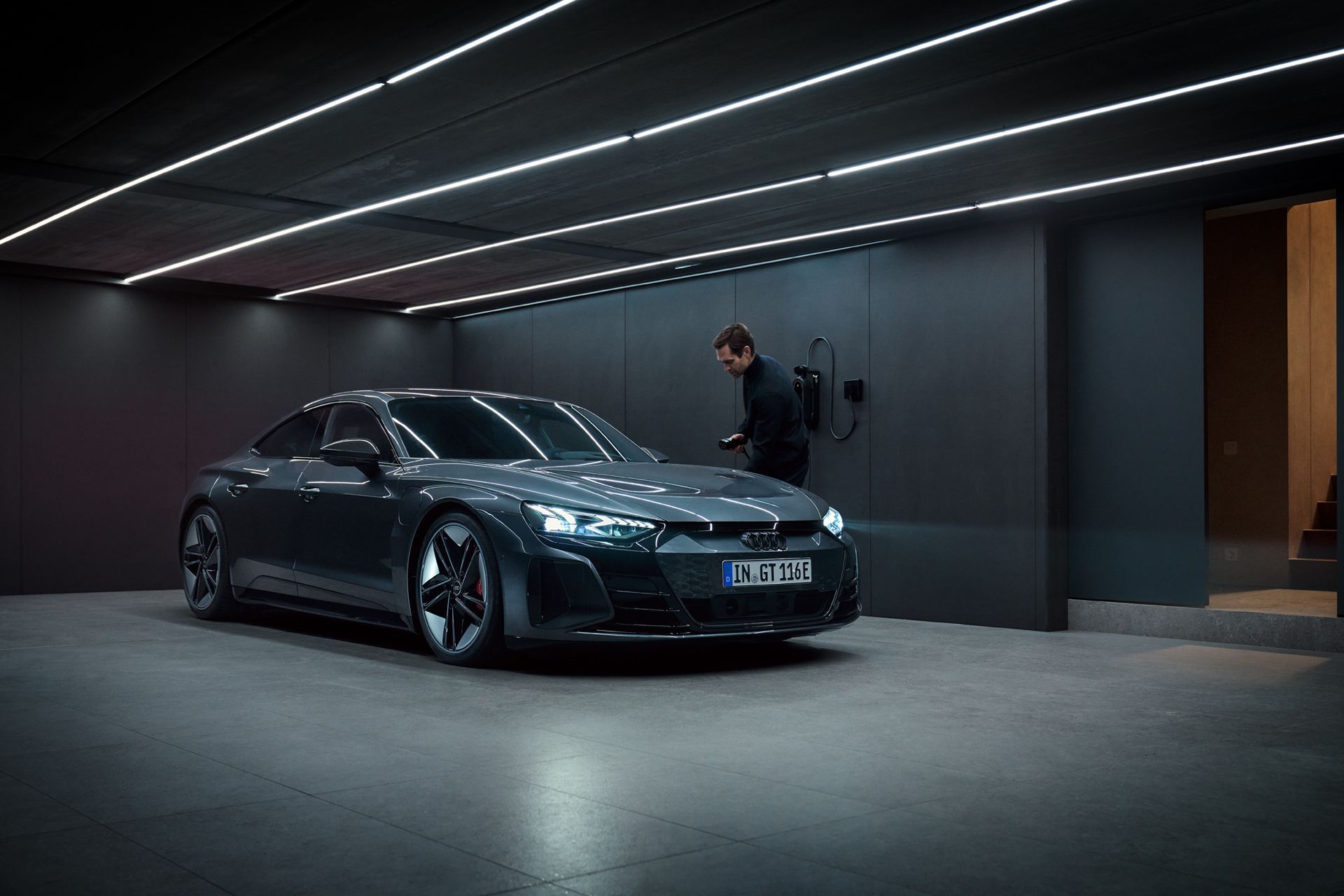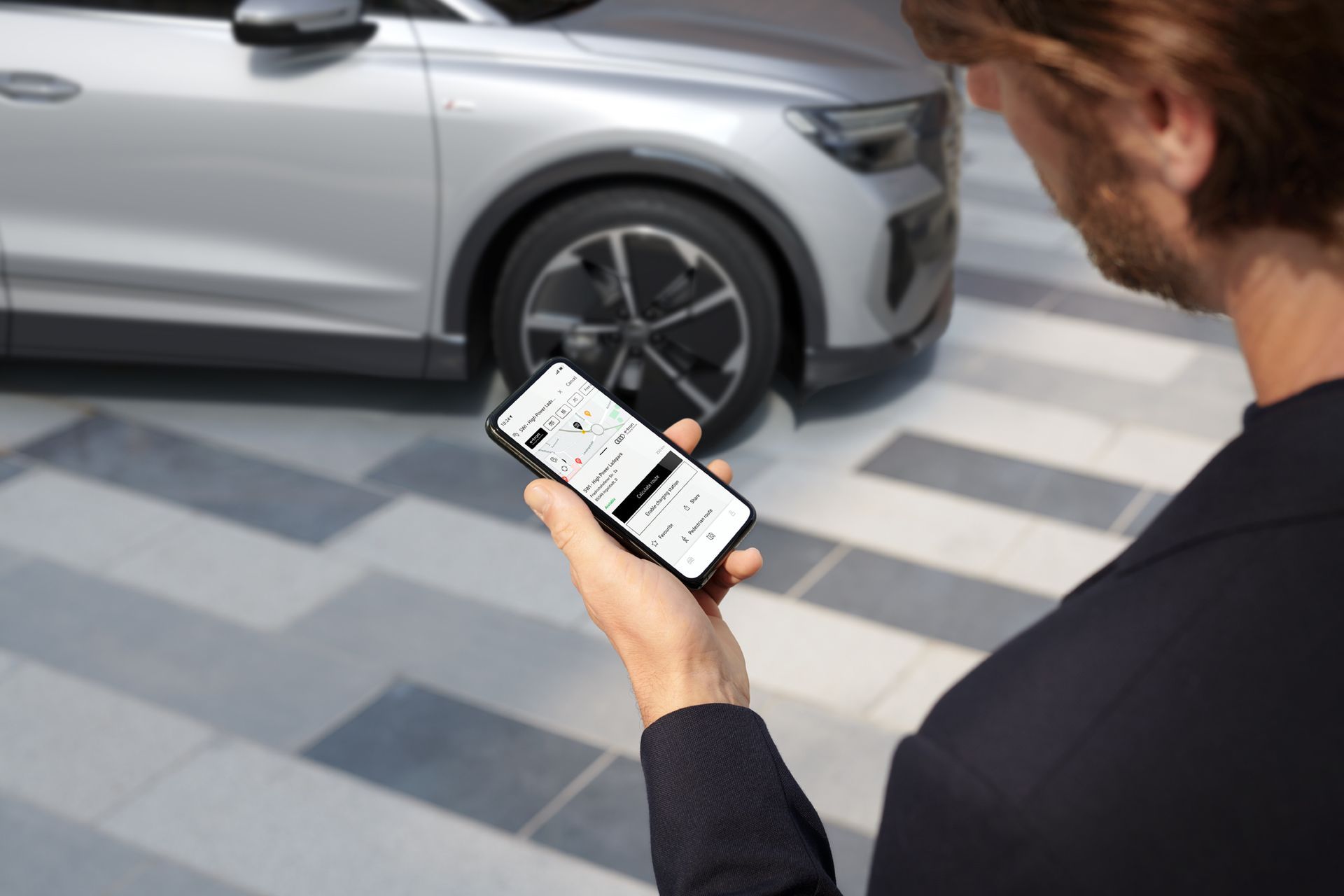The ‘ultimate garage’ — according to Audi

Garages have come a long way since their inception at the beginning of the 20th century. Similar to the automobile itself, the earliest garages were only available to the very wealthy: in this era, it was common for them to be built as additions or extensions to stables on rural estates, but always separate from the main living quarters.
A decade or so later, the assembly line mode of production ushered in the era of the affordable motor vehicle — and with this paradigm shift came a natural evolution of vehicle storage. Garages attached to the home began to appear in the 1920s, a format that became widely popular a decade later.
Following the Second World War, the uses of the typical garage evolved beyond just vehicle parking: general storage became almost as integral a purpose as vehicle storage.
And now in the 21st century, it’s so much more. Dean Sheed, the General Manager of Audi New Zealand, says the changing needs of a typical household in 2022 mean many are turning to their garages for a plethora of purposes.
“It started as a cover for a vehicle, but now a garage can be a storage area, an additional recreational room, a workshop or studio, a display room — the possibilities are endless,” says Dean.

But in the last few years, the key area in which garages have changed most, Dean says, is the integration of in-home fueling for electric vehicles (EVs). “And yes, I say fueling, not charging!” he says.
In-home refuelling is perhaps the most significant leap forward in the century-long evolution of the garage — but it’s only the beginning when it comes to ‘the ultimate garage’, Dean says.
So what, according to the general manager of Audi New Zealand, constitutes the ultimate garage?
There are two key fundamentals: connectivity and fueling capability.

Connectivity
Our cars are becoming more connected: many vehicles in Audi’s fleet, for example, have embedded SIM cards, which enable a cloud-based service platform that provides assistance, information, entertainment, and security features. Users can explore vehicle data in real-time, maximise efficiency per trip, optimise your driving style, and more within a single app.
But to make the most of this, the place in which the vehicle will be parked the majority of the time — the garage — needs to be adequately equipped.
“In the future, a lot of the software, the upgrades, the features that are released — they’ll come directly to the car from the cloud,” says Dean. “The garage is the perfect place to do this — it'll be the cheapest WiFi you've got, so you’ll need strong connectivity.”

Fueling capability
The future of automobiles is electric. Audi has had that view for many years now, Dean says, and subsequently they’ve dedicated a lot of resources toward making the shift from internal combustion engines to EVs as smooth as possible.
One of the cornerstones of ensuring this smooth transition is making refuelling as simple and seamless as possible — and in this, the garage is absolutely essential.
“From our research, up to 90% of charging is done at home,” says Dean. “So the charging capability needs to be both considered and reliable.”
And while many car chargers may be connected to the home’s current supply, Dean says that there is vast potential for EV usage to go even greener. For example, the car charging device may be connected to a stationary battery system, or a solar or wind generating device.
“The ultimate one for Audi would be the photovoltaic cells on the roof that charge up a battery storage device during the day when the sun’s out — then when the car comes back to the home, it uses that energy to charge overnight,” says Dean.
To add to the sustainability factor, these battery storage devices are often pre-used, recycled EV batteries.
“And the beauty of this system is that any excess energy left over after the car is fully charged can go back into the house’s main supply!”
Of course, for the many homes that rely on normal current to refuel their car,, a more considered approach to energy management is often necessary — and is a vital component of the ultimate garage.
“If we don't make changes to the amount of current coming into a property, then we've got to better utilise what we've got,” says Dean. “Home energy management is important because charging EVs can take up to 50% of the total current coming into the house.”
Without proper management, it can be difficult to charge EVs and do other regular household tasks simultaneously. But with it, it can allow users to take off-peak electricity, and direct it towards charging.

“It’s necessary especially for the modern garage, because in this scenario, it’s quite possibly the most significant consumer of energy in a home,” says Dean.
“It used to be that there’d just be a light bulb dangling from the ceiling. Not any more.”
And while this scenario is not currently totally widespread in New Zealand, it is definitely heading that way, if Audi’s direction is anything to go by. The company has two large SUVs and a luxury sedan in its electric fleet — and over the next few years, it will be replacing its entire model range with electric versions.
“Our future view is that we’ll all be driving electric cars, so if you haven’t already, you’ve got to get on that bandwagon!”
One way to get started is considering upgrading your garage — to get closer to ‘the ultimate garage’.
